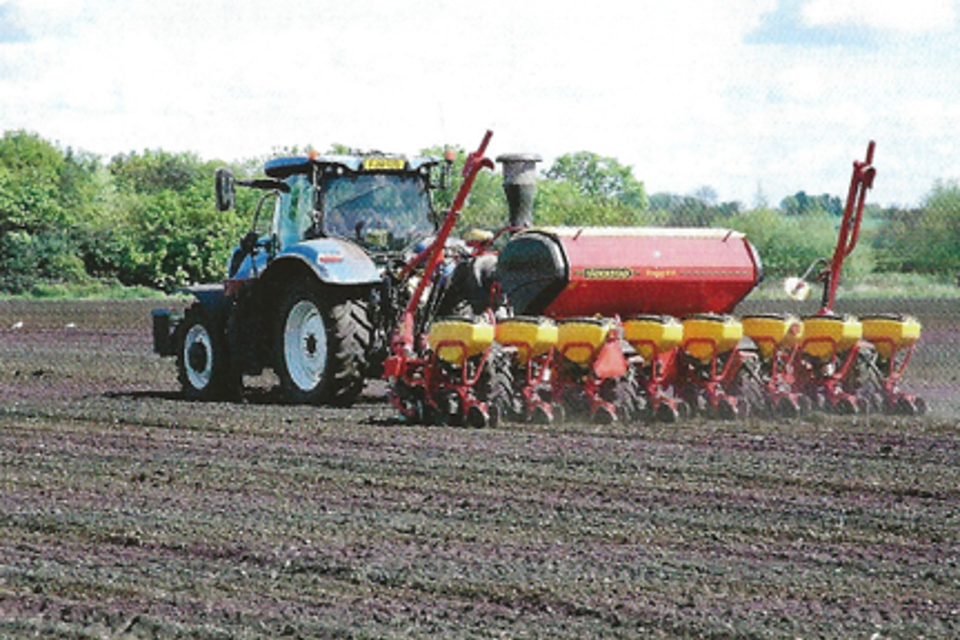
Managing risk to improve success with forage maize
News - 28.02.21
Agrii agronomy experts and LG Seeds outline how to manage risk and improve you success with forage maize crops.
A detailed focus on all aspects of plant agronomy, including nutrition, seedbed preparation and variety choice, will help improve the performance of maize crops in 2021.
Decisions taken in the next few weeks will have a significant bearing on how well maize crops will perform. Agrii agronomist and Southern Region Technical Advisor, John Vickery advises growers to make crop plans as soon as possible.
“As with any crop, there are risk factors that will influence how successful a maize crop will be. The overriding objective must be to ensure that a crop is off early enough for your situation to secure harvesting in good conditions and to allow a successor crop to be established.”
“This second point is going to become more important. With modern early maturing varieties, there is less of a trade-off between maturity date and yield. So there is no reason why high yielding, high-quality crops cannot be achieved by late-September in most of the maize growing areas of the country,” he maintains.

Sowing at the right time into a well-prepared seedbed will reduce risk.
Seedbed preparation for successful maize production
Mr Vickery stresses the role of field choice and seedbed preparation in minimising risk.
He says that if a crop can get away quickly and strongly, then the chances of success are greatly increased.
“If you do not get the seedbed right you increase the risk of poor germination and split germination—which both will impact on yield and maturity. You also increase the risk of a delayed harvest and clamping poorer quality material.
“In 2020 we had an excellent spring following on from a wet winter. However, this actually made it difficult to get a good seed-bed on some soil types, which led to issues with germination.
“The most important thing is to ensure good seed-to-soil contact with adequate moisture so that there is rapid root development and a good supply of nutrients to the young plant.
“In soils with a high clay fraction, this can be a challenge, while in sandy soils there is a risk of the soil drying out too quickly,” Mr Vickery warns.
He advises choosing fields carefully and avoiding fields that were damaged or compacted in the autumn, explaining that as maize is a deep rooting plant any compaction will prevent roots penetrating deep enough to reach water and nutrients. This can be a particular problem where continuous maize is grown and the previous year’s crop was harvested late.
Maize crop nutrition
Mr Vickery also stresses the importance of appropriate nutrition which takes full account of any organic manures applied. Using starter fertilisers to support the crop’s Nitrogen and phosphate requirement through its early development is generally well accepted.
But growers should also pay particular attention to potash which is required in huge quantities by maize.
To preserve moisture and maximise seed-to-soil contact, seedbed preparation should be left until shortly before drilling. The top layer of around 5cm needs to be worked to fine filth.
Drilling should not take place until the soil temperature is at least 8 deg C, with a drilling depth of 3 to 5cm depending on soil types and moisture content.
“If the field conditions will not be right then it is worth questioning if the crop should be drilled at all, as the risk of a poor crop will be increased. This is another place where early maturing varieties can help reduce risk. As they require fewer Ontario Heat Units to mature and a shorter growing season, it may be an option to delay drilling to ensure a better seedbed,” says Mr Vickery.
Cultivation techniques for maize crops
New cultivation techniques will potentially improve the success of crop establishment too. On heavier soils, strip tillage-which is popular across Europe-is attracting interest, allowing smaller areas of soil to be worked down. Another technique attracting interest is undersowing maize with grass to ensure successor crops are established and removing the risk of bare stubbles.
Provided care is paid to seedbed preparation, it will be possible to reduce much of the risk associated with maize crops, especially as there is now an excellent range of varieties available.

Variety considerations for livestock farmers
Brian Copestake from LG Seeds says that advances in genetic selection mean that more varieties are available specific for UK conditions. It is now easier to select early maturing varieties for timely harvest to ensure that successor crops can be established and that well-fermented silage is available to feed sooner, but which also produce high yields of highquality feeds.
“The starting point must be selecting a variety suited to the average Ontario Heat Units accumulated,” he advises.
“As a rule of thumb, it always pays to select earlier maturing varieties to reduce the risk of a delayed harvest with all the problems this can create. Many new varieties, like Resolute and Gema, produce high yields of a top-quality feed while also maturing sooner.
“Having shortlisted varieties that will grow well at your location it is important to consider early vigour. You want a crop that will germinate quickly. Then look at the production potential. There is a wide range in dry matter yield and energy content, thanks in no small part to breeding varieties with improved cell wall digestibility (CWD).”
Mr Copestake explains that, while maize is traditionally seen as a starch-based forage, around 50% of the total energy is in the vegetative parts of the plant so high cell wall digestibility is crucial to maximising feed value. Therefore, new varieties are increasingly being recognised as a source of both starch and digestible NDF-making them an all-round energy source. This, combined with improved dry matter yields, means new varieties will support greater milk production.
Extra milk production
“For example, Resolute which is FAO 190-is a first-choice variety on this year’s BSPB /NIAB list. The combination of high starch and CWD means that it produces 214,591 MJ /ha. This is enough to produce 40,489 litres/ha, which is 2,760 litres more than average, and gives a superior return on investment combined with early harvesting. The extra energy would be worth £774/ha in increased milk production or allow a reduction in purchased feed costs.
“The combination of careful variety selection and attention to detail on field choice and seedbed preparation can help reduce the risks associated with maize growing and ensure clamps full of top-quality forage harvested in optimum conditions,” Mr Cope take concludes.
Join Our Community

Agrii X
We love engaging with clients and partners. Give us a follow and let's share stories for the community.

Agrii Instagram
A picture paints a thousand words. Follow us on Instagram to see what we are up to.

Agrii Facebook
Follow us on the worlds biggest social media site for the latest news and events straight to your feed.

Agrii LinkedIn
If you are all about the business, connect with us on LinkedIn to build your network
Stay In Touch

Journal Sign-Up
Receive email updates on topical news and information from around Agrii and UK Farming.

Listen To Our Podcasts
Listen to the Tramlines Podcast. Fortnightly chat about agriculture and trials with your host Tony Smith.

Agrii Insights
Read essential agri intelligence for profitable farming.

Find an Event
Join us for our upcoming events and tours.



